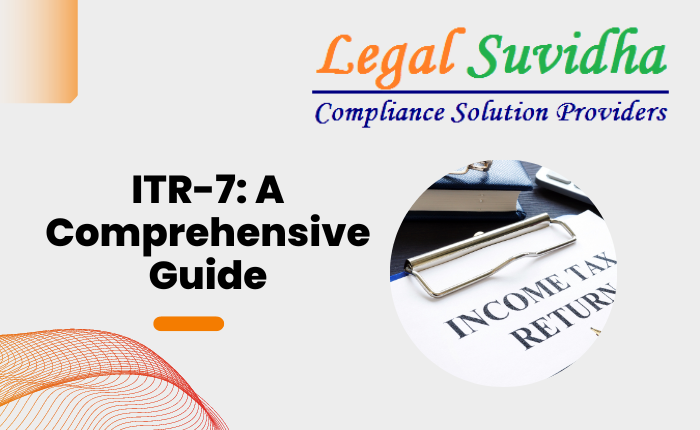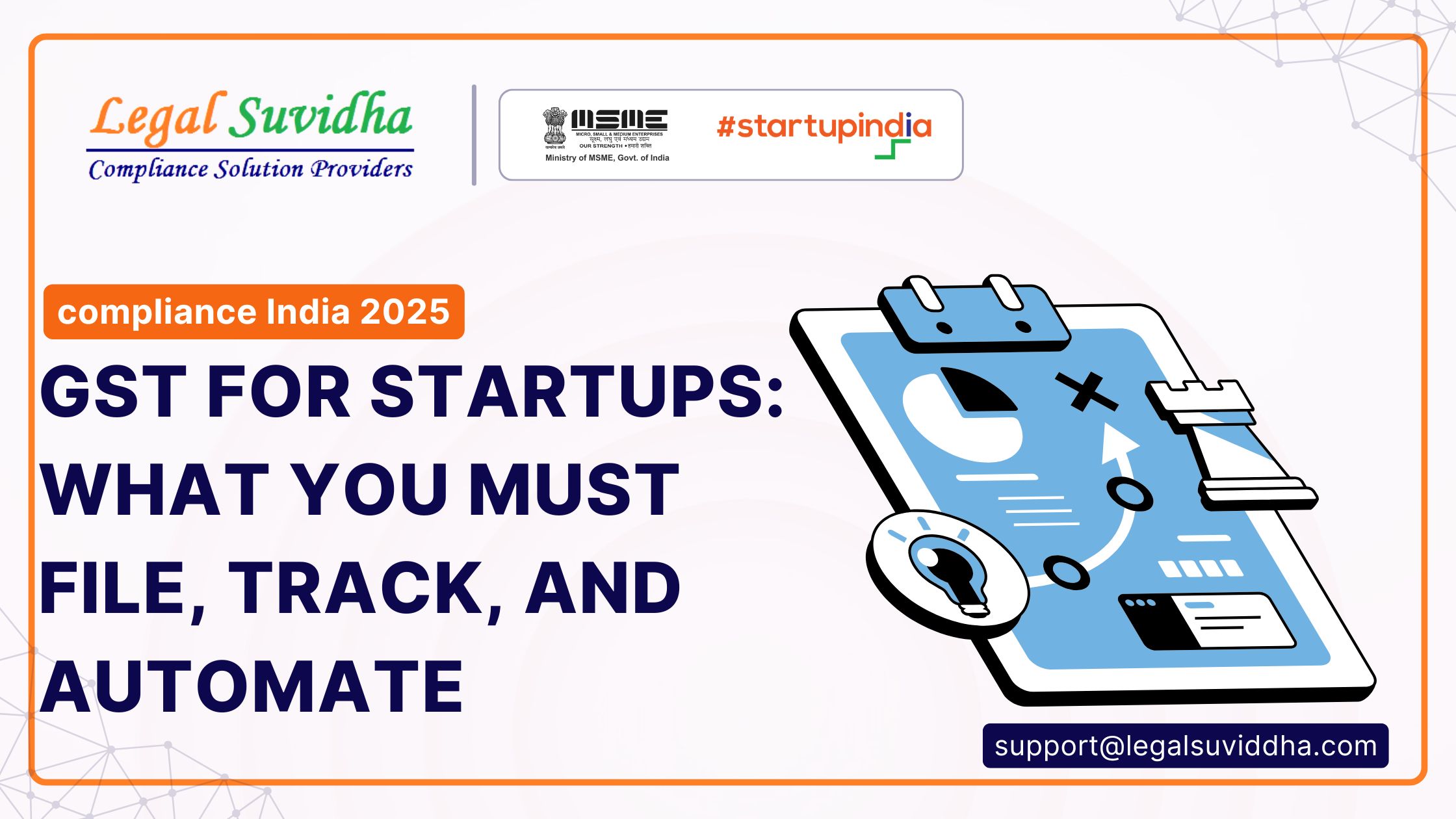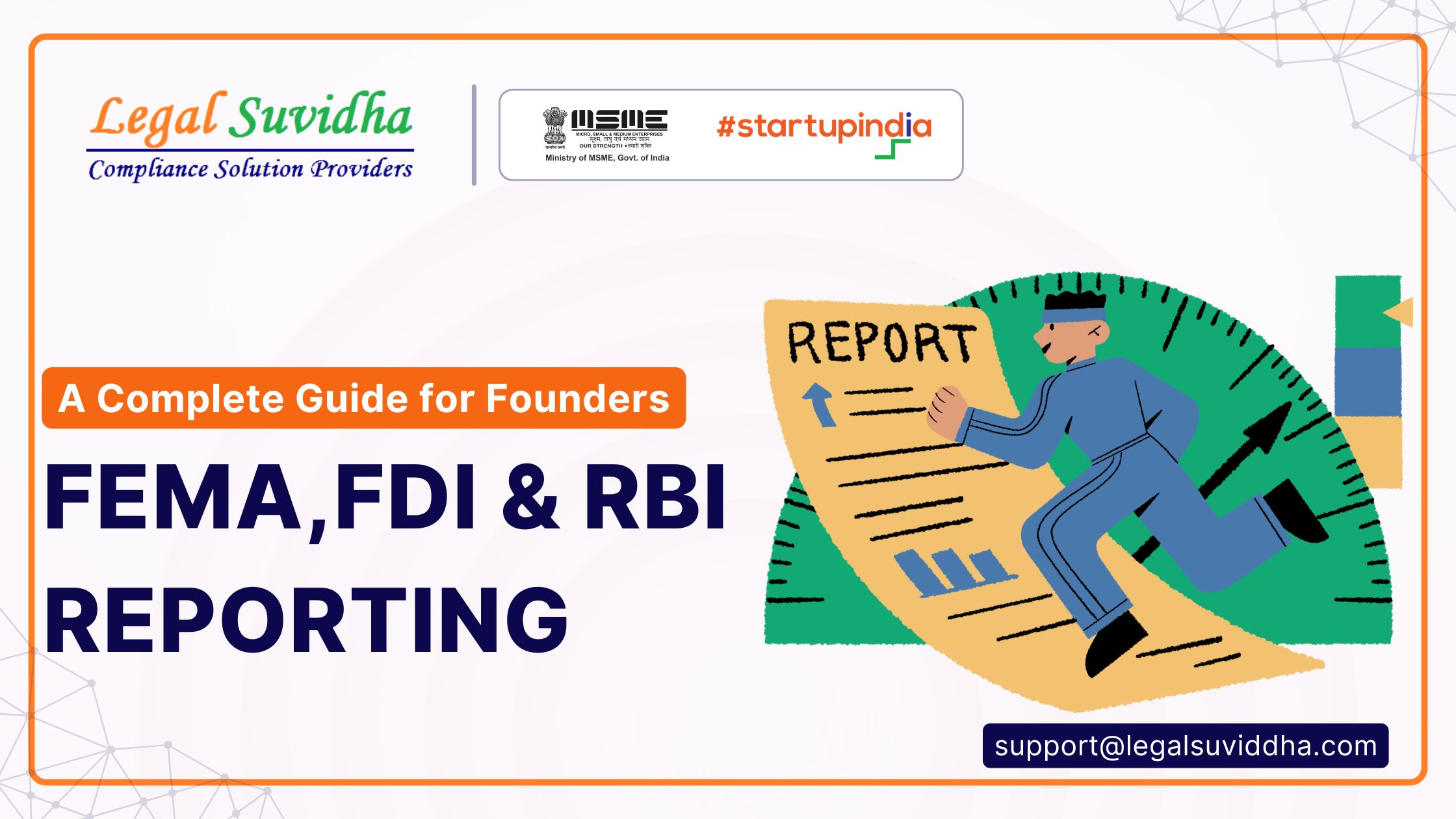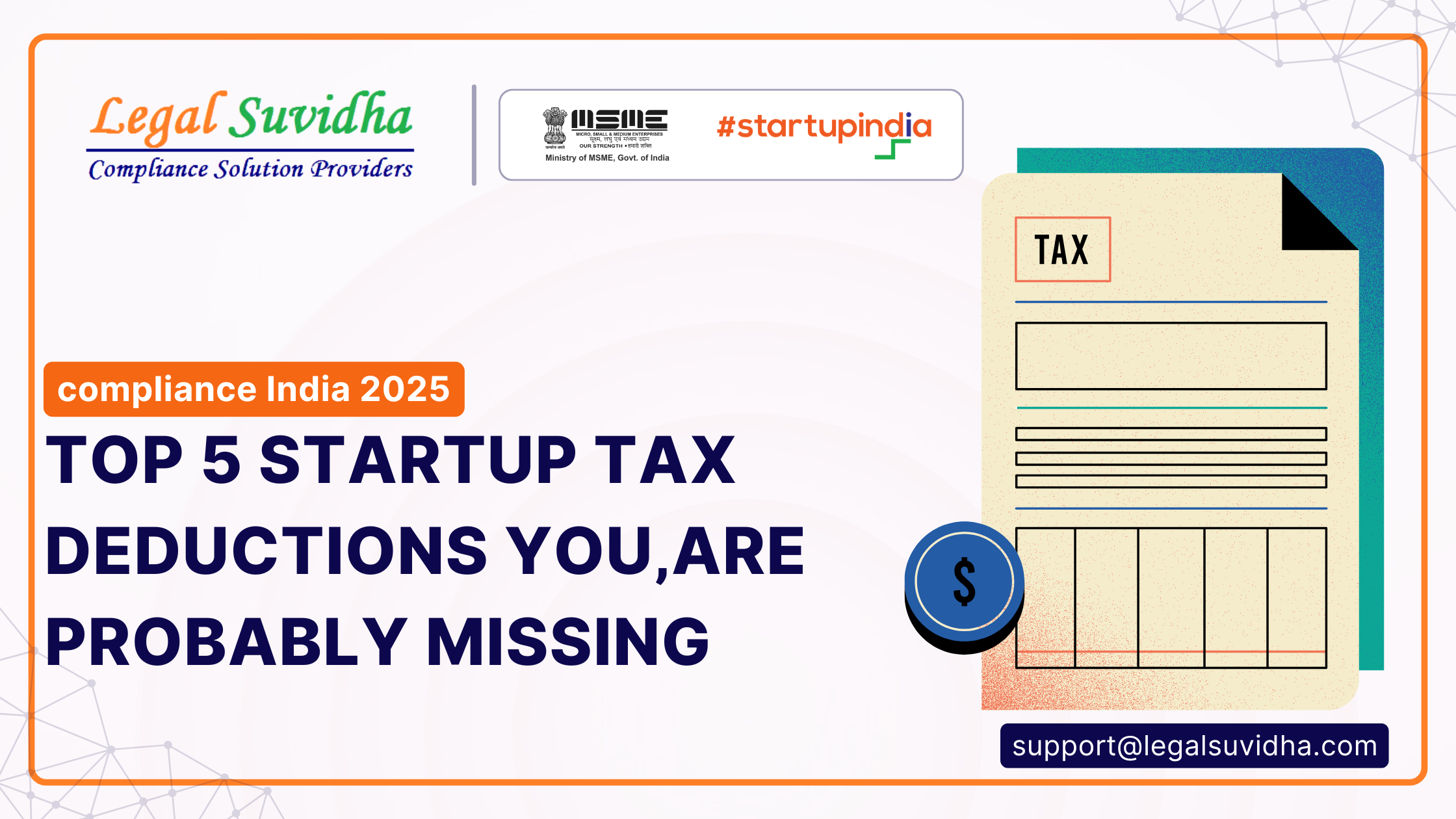Filing income tax returns is an essential responsibility for individuals and organizations alike. It not only ensures compliance with the law but also helps in assessing one’s financial standing and contributing to the nation’s progress. In this blog post, we will explore the intricacies of ITR-7, a crucial form for specific taxpayers in India. Let’s dive in and understand what ITR-7 is all about and how it affects taxpayers.
What is ITR-7?
ITR-7 is an income tax return form specifically designed for individuals and companies who fall under certain categories. It is prescribed by the Income Tax Department of India and must be filed by those entities whose income is derived from property held under trust or other legal obligations mentioned in sections 139(4A), 139(4B), 139(4C), or 139(4D) of the Income Tax Act, 1961.
Who should file ITR-7?
The following individuals and organizations are required to file their tax returns using the ITR-7 form:
- Charitable and religious trusts: Trusts established for charitable or religious purposes, including institutions that care for the elderly, promote education, or provide medical facilities, must file ITR-7.
- Political parties: Political parties that earn income from voluntary contributions, house property, capital gains, or any other sources must file ITR-7.
- Electoral trusts: Trusts formed for the sole purpose of distributing contributions to political parties must file ITR-7.
- Institutions/associations for disabled persons: Any institution or association catering to the needs of persons with disabilities, and earning income from property held under trust, should file ITR-7.
Exclusion of Annexures:
It is not necessary to include any annexures when submitting the ITR-7 return form. This includes the TDS certificate or any other supporting documents.
Verification of Tax Credits:
Taxpayers are strongly advised to cross-reference the taxes deducted, collected, or paid on their behalf with their Tax Credit Statement, also known as Form 26AS.
E-filing of Audit Reports:
In the case where the assessee is subject to Audit as per section 44AB and their accounts have been audited by a qualified accountant, they must provide the relevant details of the audit report, including the date of submission to the tax department, under the “Audit Information” section.
Who is eligible to file Form ITR 7 for income tax purposes?
- Form ITR 7, as outlined in Section 139 (4A) of the Income Tax Act, is applicable to individuals who derive income from property that is used either wholly or partially for charitable or religious purposes, provided that such property is held under a legal obligation or trust.
- In the case of political parties, Section 139 (4B) mandates the use of Form ITR 7. However, political parties are exempted from filing income tax returns if they file their annual returns through Form ITR 7, as per the provisions of Section 13A.
- Form ITR 7, as per Section 139 (4C), is to be filed by the following entities:
1. Associations engaged in scientific research.
2. News agencies.
3. Associations specified under Section 10 (23A).
4. Other listed institutions specified under Section 10 (23B).
- Under Section 139 (4D), schools, colleges, and institutions that are not covered by any other section of the Income Tax Act are required to file Form ITR 7 under this regulation.
- Business trusts are required to file their income tax returns using Form ITR 7, as stated in Section 139 (4E).
- Any investment fund referred to in Section 115UB is required to file Form ITR 7 under Section 139 (4F). There is no obligation to provide income or loss returns under this section.
Structure of ITR 7 Form
The ITR 7 Form follows a comprehensive structure consisting of two main parts and nineteen schedules. This structure is designed to gather and organize essential information related to income tax filing.
Part A of the form is dedicated to providing general information, allowing individuals to furnish their personal details and relevant particulars.
Part B focuses on outlining the total income and tax computation concerning income subject to taxation. It entails detailed calculations and breakdowns for a thorough assessment.
The nineteen schedules included in the ITR 7 Form are as follows:
1. Schedule-I: This schedule requires the disclosure of details regarding amounts accumulated or set apart within the meaning of section 11(2) in the previous year, specifically the preceding years relevant to the current assessment year.
2. Schedule-J: In this schedule, individuals are required to present a statement showcasing the investment of all funds belonging to the Trust or Institution as of the final day of the previous year.
3. Schedule-K: This schedule mandates the submission of specific particulars regarding the Author(s), Founder(s), Trustee(s), Manager(s), and other relevant individuals associated with the Trust or Institution.
4. Schedule-LA: Individuals affiliated with political parties must provide comprehensive details in this schedule.
5. Schedule-ET: Individuals linked to Electoral Trusts must furnish relevant information in this schedule.
6. Schedule-HP: This schedule deals with the computation of income under the head “Income from House Property.”
7. Schedule-CG: Computation of income under the head “ITR” is covered in this schedule.
8. Schedule-OS: Individuals must compute income under the head “Income from other sources” in this schedule.
9. Schedule-VC: Details of Voluntary Contributions received need to be recorded in this schedule.
10. Schedule-OA: This schedule is dedicated to general information about business and profession.
11. Schedule-BP: Computation of income under the head “Profit and Gains from Business or Profession” is to be provided in this schedule.
12. Schedule-CYLA: A statement of income after the set-off of the current year’s losses must be included in this schedule.
13. Schedule-MAT: The computation of Minimum Alternate Tax payable under section 115JB (n) is required in this schedule.
14. Schedule-MATC: Individuals need to compute tax credits under section 115JAA in this schedule.
15. Schedule AMT: Computation of Alternate Minimum Tax payable under section 115JC (p) is addressed in this schedule.
16. Schedule AMTC: Calculation of tax credit under section 115JD is to be furnished in this schedule.
17. Schedule-SI: A statement of income chargeable to tax at special rates must be provided in this schedule.
18. Schedule-IT: This schedule requires the submission of a statement detailing the payment of advance tax and tax on self-assessment.
19. Schedule-TDS: Individuals need to furnish a statement of tax deducted at source on income other than salary in this schedule.
20. Schedule-TCS: A statement of tax collected at source is to be included in this schedule.
21. Schedule FSI: Details of income accruing or arising outside India should be recorded in this schedule.
22. Schedule TR: Comprehensive information about taxes paid outside India needs to be provided in this schedule.
23. Schedule FA: Individuals must furnish details of Foreign Assets in this schedule.
By adhering to this structured format, individuals can accurately complete and submit their ITR 7 Form, ensuring compliance with tax regulations.
Proper Sequence for Filing ITR 7 Form: A Step-by-Step Guide
When it comes to filing the ITR 7 Form, it is essential to adhere to the prescribed sequence recommended by the Income Tax Department. Following these steps will ensure a smooth and accurate filing process for your income tax return. Here is the recommended sequence:
1. Part A:
Start by carefully completing Part A of the ITR 7 Form. This section requires you to provide essential details, such as your personal information, taxpayer identification number, and relevant contact information. Ensure accuracy and double-check the information provided before proceeding.
2. Part B:
Once you have completed Part A, proceed to Part B of the form. In this section, you will need to provide details about your total income, deductions claimed, and tax computation. Take your time to accurately calculate your income and deductions to ensure compliance with tax regulations.
3. Schedules:
Following the completion of Part B, move on to the Schedules section. Here, you will be required to provide additional information specific to your income sources, investments, and any other relevant details that pertain to your tax liability. It is crucial to carefully fill out the schedules and include all necessary information to avoid discrepancies or omissions.
4. Verification:
After filling out the relevant schedules, it is time to move on to the verification stage. In this step, you will need to review all the information provided in the ITR 7 Form to ensure its accuracy and completeness. Make sure to strike out any sections or fields that are not applicable to your particular situation.
5. Digital Signature:
To complete the filing process, it is mandatory to digitally sign the verification document. The signature must be affixed by the person authorized to sign on behalf of the entity for which the return is being filed. It is also essential for the signatory to mention their designation within the entity.
By diligently following this recommended sequence for filing the ITR 7 Form, you can ensure a systematic and error-free submission of your income tax return. Remember to keep all relevant supporting documents and records for future reference and to assist in any potential tax audits.
Guidelines for Completing ITR 7 Form
When filing the ITR 7 form, it is crucial to adhere to the following instructions provided by the Income-tax department:
1. Accurate and Proper Filing: Ensure that all the details are filled in correctly as specified; otherwise, the return may be considered defective or invalid.
2. Rounding Off Tax and Income Figures: Round off the figures related to tax and income to the nearest multiples of ten rupees.
3. Rounding Off Other Figures: Round off all other figures to the nearest one rupee.
4. Representation of Negative or Loss Figures: In case of negative figures or loss figures, indicate them by placing a “-” before the respective number, unless otherwise specified.
5. Indicate “Nil” for Zero or Nil Values: If a figure has a zero or nil value, write “Nil” to denote this.
6. “NA” for Non-applicable Items: If a particular item does not apply to the assessee, write “NA” (Not Applicable) against it.
By following these instructions diligently, taxpayers can ensure accurate and compliant filing of their ITR 7 forms.
If You have any queries then connect with us at [email protected] or [email protected] & contact us & stay updated with our latest blogs & articles








